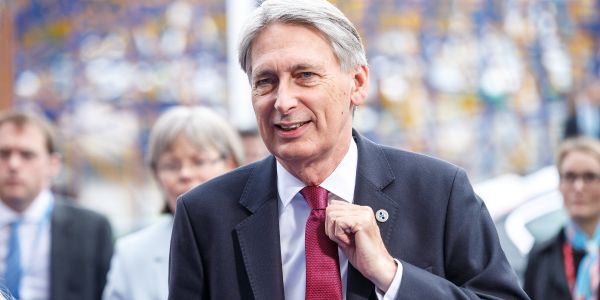- By Buckinghamshire Business First
- 23 November, 2017

Share by email
2017’s Autumn Budget sets out to prepare Britain for “a new relationship with the European Union”, aiming to support families and businesses, set a path to a more open Britain, and build an economy that is fit for the future.
Productivity
While the UK labour market continues to perform well, with employment at record levels, productivity grew by just 0.2 per cent in 2016, well below the 2.1 per cent recorded in the years before 2008. Productivity in the UK has long been below that of other advanced economies and in his speech the Chancellor confirmed that “our productivity continues to disappoint”. The Office for Budget Responsibility’s new more modest forecasts expect productivity growth to stand at 1.2 per cent by 2022, meaning that by the start of 2023, output per hour will be 27 per cent below the extrapolated pre-2008 trend.
The Budget identifies that “every region in the UK has a part to play in boosting the national economy” (para 4.54), while maintaining the ambition to close the regional productivity disparities (para 4.29). Policies are set out for the Northern Powerhouse and Midlands Engine, with new devolution deals and powers established for all regions outside the South East, together with the creation of a £1.7bn Transforming Cities Fund for Combined Authorities (para 4.42).
Although containing no specific sums of investment, the Cambridge-Milton Keynes- Oxford Corridor is explicitly addressed both in the Budget and in the accompanying overarching vision, published alongside the Budget. The corridor is described as “a national asset that competes on the world stage and fires Britain’s economy”, with the vision asking stakeholders from across the corridor to develop a strategy to deliver the National Infrastructure Commission’s high-level vision that could lead to an additional £163bn in GVA by 2050.
The Industrial Strategy White Paper will be released in the coming days and will “explain the active role the government will take, working in partnership with the private sector, to encourage investment in the technologies of the future” (para 4.2). However, the Budget does identify specific interventions to develop technology, including in artificial intelligence, computer games, autonomous vehicles, and geospatial data (paras 4.10 to 4.16).
Housing
Housing features prominently in the Budget. Housing stock is to increase by levels not seen since the 1970s by the end of the Parliament (para 5.4) and is “on course” to reach an average of 300,000 per year by the mid-2020s, according to the speech. Housing is to be targeted in areas of high demand, including the South East, which can expect to be the location of at least one of the five new Garden Towns announced (para 5.17).
A Housing Deal with Oxfordshire to deliver 100,000 new homes by 2031 was announced in the Budget (paras 4.66 and 5.19), the first step to a more strategic and zonal approach to planning to ensure new investment, such as the additional £2.7bn allocated to the Housing Infrastructure Fund (para 5.18). Commitments will be sought with the Eastern and Central sections (including Buckinghamshire) in 2018 (para 5.19).
The planning system is to be reformed “to boost the availability of land in the right places for homes” (para 5.6), while maintaining the Government’s “commitment to retain the current protections for the Green Belt” (para 5.6). The Housing Delivery Test will be strengthened (para 5.11), “setting the threshold at which the presumption in favour of development applies at 75% of housing delivery by 2020”.
Tax and Pay
The personal allowance is raised to £11,850 in 2018/19, with the higher rate threshold rising to £46,350 (para 3.5). The National Living Wage will rise 4.4 per cent to £7.83, with younger workers, with the exception of 16 and 17 year olds, seeing higher rises (para 4.31).
Business rate indexation will switch from RPI to the generally lower CPI from April 2018 (para 3.27), and the revaluation of properties by the Valuation Office Agency will now take place every three years, down from five.
The VAT registration threshold will remain at £85,000 until April 2020 at the earliest (para 3.61), and the Budget confirmed that previously announced rises to Class 4 National Insurance Contributions will no longer come into effect (para 3.18). Vehicle Duty is frozen (para 3.40).
Skills
A National Retraining Partnership (para 4.21) is being created between Government, the Confederation of British Industry (CBI) and the Trades Union Congress (TUC) to work with new Skills Advisory Panels to “ensure local economies’ needs are met”. Initially the focus will be on digital and construction skills. In addition, a sector deal for construction is being developed (para 5.25), together with £34m to scale up innovative training models.
The Budget announced £406m for maths and technical education to improve the supply of skilled workers into STEM occupations (para 4.20).
Budget Speech:
https://www.gov.uk/government/speeches/autumn-budget-2017-philip-hammonds-speech
Budget report and supporting documents:
https://www.gov.uk/government/publications/autumn-budget-2017-documents
Economic and Fiscal Outlook from the Office for Budget Responsibility:
http://budgetresponsibility.org.uk/efo/economic-fiscal-outlook-november-2017/







